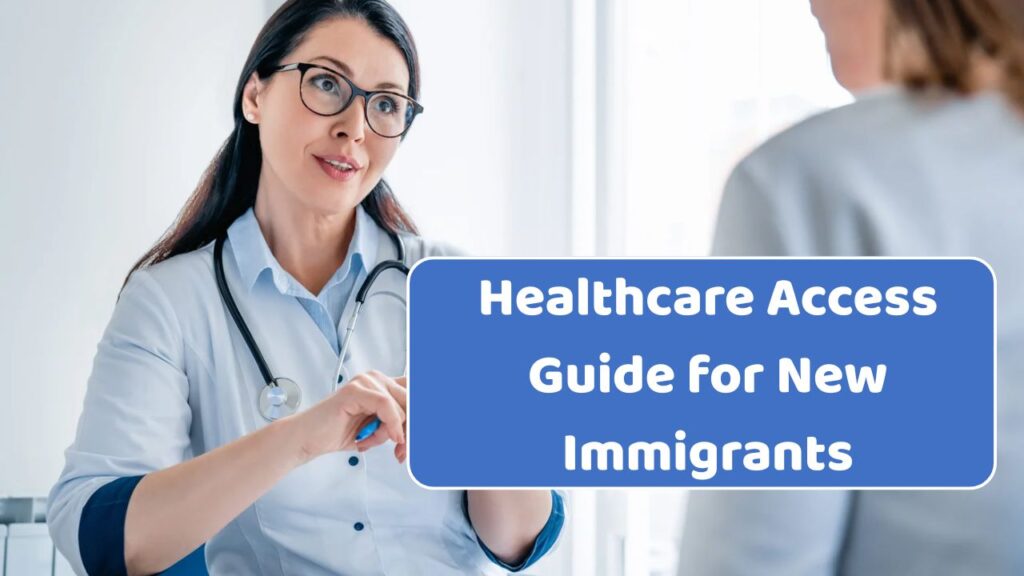Accessing Healthcare – Moving to a new country can be exciting but also challenging, especially when it comes to accessing healthcare services. For new immigrants in the United States, understanding how the healthcare system works is crucial. Unlike many countries with universal healthcare, the U.S. operates on a private insurance model with federal and state-level programs for eligible groups. This guide explains step-by-step how newcomers can access affordable and reliable healthcare in the United States, including insurance options, eligibility, and important tips to help navigate the system confidently.

Understanding Health Insurance Options for New Immigrants in the USA
Healthcare in the United States is primarily insurance-based, meaning individuals must either purchase private health insurance or qualify for government programs like Medicaid or Medicare. New immigrants often begin with short-term coverage or marketplace plans available through the Affordable Care Act (ACA). The Health Insurance Marketplace allows immigrants with legal status to compare different plans based on coverage, premium, and benefits. It’s essential to apply during the open enrollment period or within 60 days of arrival to ensure uninterrupted coverage and access to essential medical services across the country.
Government Health Programs for Immigrants Across the United States
The U.S. government provides several programs to assist eligible residents in accessing affordable healthcare. Legal permanent residents and refugees may qualify for Medicaid depending on their income and state policies. Pregnant women, children, and seniors often receive special consideration under federal assistance programs. Immigrants who don’t qualify immediately can still receive emergency care and preventive services at federally funded community health centers. These centers operate nationwide and charge on a sliding scale based on income, ensuring healthcare remains accessible for low-income individuals and families.
| Healthcare Option | Eligibility | Coverage Type | Average Cost (Monthly) |
|---|---|---|---|
| Private Health Insurance | All legal immigrants | Full coverage | $200–$600 |
| Medicaid | Low-income residents | Essential medical services | Free or low-cost |
| ACA Marketplace Plans | Legal immigrants | Comprehensive coverage | $50–$400 (after subsidy) |
| Community Health Centers | All immigrants | Basic care and emergency | Sliding scale |
| Short-term Health Plans | Recent arrivals | Temporary coverage | $100–$250 |
Steps for Immigrants to Access Healthcare Services in America
To access healthcare, immigrants should start by obtaining necessary identification such as a Social Security Number (SSN) or an Individual Taxpayer Identification Number (ITIN). Next, research the available health insurance options in your state through the official HealthCare.gov portal. Compare premiums, coverage limits, and network hospitals before choosing a plan. After enrollment, find a primary care physician within your insurance network. Regular checkups and preventive care are highly recommended in the United States to avoid costly emergency treatments and maintain overall well-being as you settle into your new life.
Affordable Healthcare Assistance for Immigrants in the United States
Several nonprofit and government organizations provide assistance to help immigrants access affordable healthcare. Groups like the National Immigration Law Center and Health Resources and Services Administration (HRSA) help newcomers navigate insurance enrollment and find nearby clinics. Many U.S. cities also have immigrant resource centers that guide families through documentation, eligibility checks, and language support. Seeking advice from these organizations ensures that immigrants can receive the medical care they need without facing unnecessary financial stress or confusion.
Frequently Asked Questions (FAQs)
1. Can new immigrants in the U.S. get free healthcare?
Most immigrants do not qualify for free healthcare immediately, but they can access low-cost services through community clinics or Medicaid depending on eligibility.
2. What is the best health insurance option for new immigrants?
Marketplace insurance plans under the Affordable Care Act are usually the best starting point for legal immigrants as they offer subsidies and wide coverage.
3. Can undocumented immigrants receive healthcare in the U.S.?
Undocumented immigrants can access emergency services and low-cost care at community health centers but are not eligible for federal insurance programs.
4. How do I find a doctor after moving to the United States?
After enrolling in a health insurance plan, use your provider’s network directory or online tools like HealthCare.gov to locate a nearby primary care physician.




